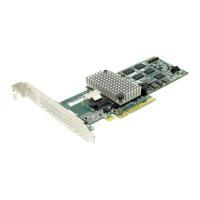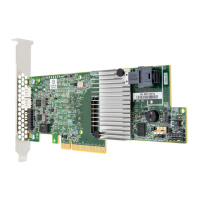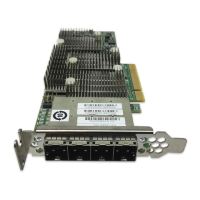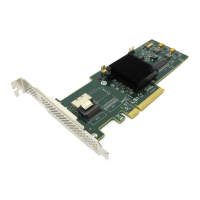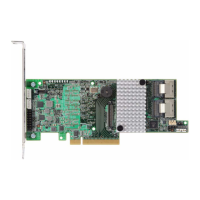Command Logging
www.lsi.com/channel/products 229
Command Logging
All changes that are made to RAID configurations using 3DM2 or CLI are
automatically stored in a special log file, tw_mgmt.log. This log can be
helpful for troubleshooting problems with your RAID controller and units.
Under FreeBSD, Linux, Mac OS, OpenSolaris, and VMware Mac OSX, and
FreeBSD, the tw_mgmt.log is in the
/var/log directory.
For Windows 7, Windows Vista, and Windows Server 2008, tw_mgmt.log is
in
\ProgramData\3ware
For earlier versions of Windows, tw_mgmt.log is in
\Documents and Settings\All Users\Application Data\3ware
You can enable or disable command logging through 3DM2 under Server
Configuration on the 3DM2 Settings page. For more information, see
“Controlling Command Logging in 3DM2” on page 62.
For more information about command logging, search the LSI
KnowledgeBase for keyword 15123 at http://kb.lsi.com.
Drive Performance Monitoring
When one drive in a RAID unit is responding much slower than others, it
reduces the performance of the entire unit.
Drive Performance Monitoring (DPM) is now available to measure drive
performance, and to help identify when a specific drive is causing problems
so that you can have the drive manufacturer repair or replace it.
DPM is an advanced trouble-shooting tool. Commands are available through
the 3ware CLI to enable and disable DPM, and to see a range of different
statistics. These statistics can be useful to LSI technical support to help you
troubleshoot problems with your RAID controller and units.
Types of DPM Statistics
The following drive statistical data can be stored and reported:
• Queue depth, which indicates the number of read/writes that are
currently outstanding.
•IOP, which indicates the number of read/writes that have completed
• Transfer rate, which indicates the number of sectors that have been read/
written
• Response time, which indicates the execution time of all commands
• Command read/writes, which indicates the drive and drive sectors'
accumulated read and write commands.
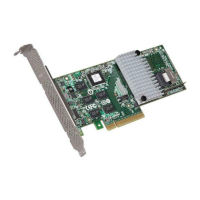
